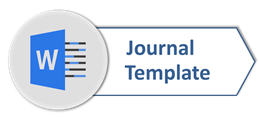Powtoon: A Digital Medium to Optimize Students’ Cultural Presentation in ELT Classroom
Abstract
Facing industrial revolution 4.0 requires university students to provide themselves with a skill that they can use to compete with machines or computers. One of the skills is negotiation which involves mastering language, especially English as a means of international communication. However, learning English as a foreign language is not as easy as it seems. The students need to use a proper learning media which match their characteristics as digital native and motivate them in learning English such as multimedia. By using multimedia, the students will not only learn about language but also the skill about how to use the media or a computer to come up with industrial revolution 4.0. Thus, the researchers who are English lecturers aimed to encourage students in Universitas Teknokrat Indonesia (UTI) to use more web-based medium as a medium in learning English in a class, exclusively Powtoon. This research used a qualitative method since it disclosed how UTI students use Powtoon in a class and what their opinion toward Powtoon for learning English. During the research, the students used Powtoon in a class as a presentation medium for a half-semester because after mid-test they were divided into 13 groups to present the topics given by the lecturer. For each meeting, there were 2-3 groups presentation. At the end of the semester, the students were given questionnaire related to multimedia usage and responded that they felt motivated in learning English by using technology especially Powtoon. As a result, using a web-based medium in learning English can increase not only student’s ability to language but also technology.
Full Text:
PDFReferences
Almara’beh, H., Amer, E.F., & Sulieman, A. 2015. The Effectiveness of Multimedia Learning Tools in Education. International Journal of Advanced Research in Computer Science and Software Engineering, 5(12), 761-764.
Andrea. B., Gabriella, H., & Tímea, J. 2016. Y and Z Generation at Workplace. Journal of Competitiveness, 8(3), 90-106.
Constantinescu, G . 2015. Language Differences in the Negotiation: Applications for the Recruitment Negotiation on the Work Market. International Conference NEDES 2015 9th Edition. Retrieved from:
https://www.researchgate.net/publication/303721358_LANGUAGE_DIFFERENCES_IN_THE_NEGOTIATION_APPLICATIONS_FOR_THE_RECRUITMENT_NEGOTIATION_ON_THE_WORK_MARKET. Accessed on September 11, 2019.
Gray, A . 2016. The 10 skills you need to thrive in the Fourth Industrial Revolution¬, January 19, 2016. Word Economic Forum. Retrieved from: https://www.weforum.org/agenda/2016/01/the-10-skills-you-need-to-thrive-in-the-fourth-industrial-revolution/
Grzeszczyk, K.B. 2016. Using Multimedia in the English Classroom. World Scientific News, 43(3), 104-157.
Hamiti, M. & Reka, B. 2012. Teaching with Technology. Procedia – Social and Behavioral Sciences, 46, 1171-1176.
Liza, F., & Akmar, F. 2018. English Communication for Digital Technology: Bridging the Gap between Industrial Revolution 4.0 Requirements and Graduates Readiness. Journal of Education and Social Sciences, 10(1), 144-150.
Nassaji, H. 2015. Qualitative and descriptive research: Data type versus data analysis. Language Teaching Research, 19(2), 129-132.
Pavithra, A., Aathilingam, M., & Prakash, S.M. 2018. Multimedia and Its Applications. International Journal for Research & Development in Technology, 10(5), 271-276.
Pourkalhor, O., & Esfandiari, N. 2017. Culture in Language Learning: Background, Issues and Implications. International Journal of English Language & Translation Studies, 5(1), 23-32.
Prensky. M. 2001. Digital Native, Digital Immigrants. On the Horizon, 9(5), 1-6.
Shahroom, A.A., & Hussin, N. 2018. Industrial Revolution 4.0 and Education. International Journal of Academic Research in Business and Social Sciences, 8(9), 314-319.
Singh, M., & Singh, A.K. 2014. Multimedia and Classroom management. Scholars Journal of Arts, Humanities and Social Sciences, 2(2A), 141-143.
Stephanie. 2015. Likert Scale Definition and Examples. Retrieved from: https://www.statisticshowto.datasciencecentral.com/likert-scale-definition-and-examples/. Accessed on September 11, 2019.
Turner, A. 2015. Generation Z: Technology and Social Interest. The Journal of Individual Psychology, 71(2), 103-113.
DOI: https://doi.org/10.33365/ts.v18i1.526
Refbacks
- There are currently no refbacks.
Copyright (c) 2020 Lulud Oktaviani

This work is licensed under a Creative Commons Attribution-ShareAlike 4.0 International License.
Teknosastik: Jurnal Bahasa dan Sastra
Publisher: Universitas Teknokrat Indonesia
Address: Zainal Abidin Pagaralam Street 9-11, Bandar Lampung, Indonesia
Website: https://ejurnal.teknokrat.ac.id/index.php/teknosastik/index

Creative Commons Attribution-ShareAlike 4.0 International License






